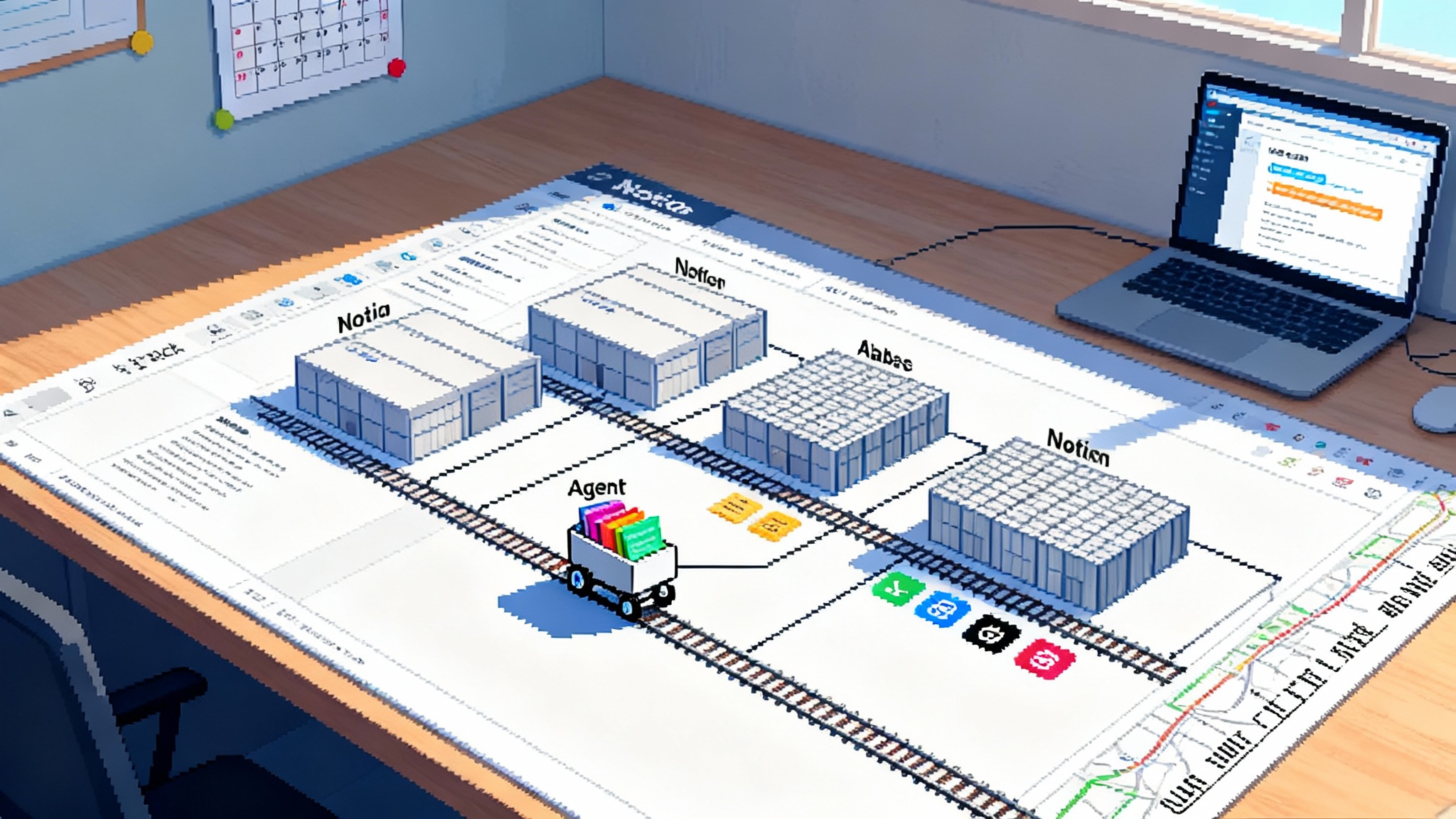Amazon Quick Suite Goes GA and Makes Agents the Unit of Work
Amazon just launched Quick Suite, a cloud native workspace that fuses research, BI, flows, and automation behind one system chat agent. With seat plus agent hour pricing and open standards, it challenges office work as we know it.

Breaking: AWS turns the daily workflow into an agent playground
On October 9, 2025, Amazon took a direct swing at how office work gets done. The company shipped Amazon Quick Suite, a cloud native workspace where agents gather information, analyze it, and execute tasks in the same place. This is not a demo or a developer preview. It is a generally available product with governance, admin controls, and billing. Within minutes of the launch, early customers were already connecting their data, asking questions in chat, and watching agents file tickets, update records, and send approvals. If you have been waiting for a clear line between the age of experiments and the age of production, this is it. You can read the announcement where AWS announced Quick Suite GA.
What actually shipped
Quick Suite packages five capabilities behind a single, clean interface:
- Quick Research for deep, source based investigation using company content and the public web
- Quick Sight for business intelligence, dashboards, and data stories
- Quick Flows for point and click workflows that chain steps together
- Quick Automate for multi step, approval aware automations that run on schedules or triggers
- Quick Index as the connective tissue that ingests, organizes, and retrieves content from your cloud drives and apps
The experience revolves around a system level chat agent that can call other UI agents. Think of the system agent as a dispatcher. It listens to your intent, identifies the right data, delegates parts of the work to specialist agents, then brings results back to you for approval or hands off to an automation. From a user’s perspective, the shift is subtle. You still start with a question in a chat box. From an organizational perspective, it is profound. The chat is no longer a search bar. It is a cockpit.
From demo to desk: why this matters
For the past two years, many agent demos have looked magical yet stopped at the last mile. They could derive an insight but not apply it inside the tools where work actually happens. Quick Suite crosses that gap. It connects to Slack, Salesforce, ServiceNow, Jira, and others, then lets agents take actions such as creating opportunities, opening incidents, or updating tickets. It does not just surface answers. It executes decisions.
Here is what that looks like in practice:
- A regional sales manager asks, “Which open opportunities in the Southeast are at risk this quarter and what actions should we take?” The system chat agent pulls win rate history, scans recent emails and call notes, flags deals with stalled activity, drafts escalation messages, and creates a follow up plan directly in Salesforce with owner assignments.
- A customer support lead prompts, “Reduce our midnight incident response time by 20 percent without adding headcount.” Quick Suite examines past incidents, identifies a bottleneck between Slack paging and ticket handoffs, proposes a new on call rotation, sets PagerDuty rules, and opens a change request in ServiceNow. Human approvals are kept in the loop where policy requires them.
- A finance analyst asks, “What is the fastest way to cut non critical spend by 3 percent this month?” The agent tests scenarios using Quick Sight, prioritizes vendor categories, drafts emails to budget owners, and schedules a weekly progress snapshot to leadership.
These are not stitched together by a handful of brittle scripts. They are driven by an agent that understands the task, the data, and the target applications.
Pricing that admits what work looks like now
Quick Suite introduces an important pricing truth. Most knowledge workers need a baseline of agent capability every day, then spikes of heavier automation and research when the quarter heats up. Amazon reflects this with per seat licensing plus metered usage called agent hours. There are two seats, Professional at 20 dollars per user per month and Enterprise at 40 dollars. Each tier includes a monthly allowance of agent hours for Quick Research, Quick Flows, and Quick Automate, with pay as you go beyond that. There is also an account level infrastructure fee and storage based charges for Quick Index. The official page has the specifics for entitlements, overage rates, and storage thresholds, and it is worth a careful read in the Quick Suite pricing overview.
The implication for budget holders is clear. Seat licensing covers everyday work. Metered agent hours let you scale up without renegotiating contracts or buying a new bundle. Finance leaders finally get a knob they can turn that maps to how work actually bursts.
Open by default: from insight to action across your stack
Interoperability is the quiet superpower in this release. Quick Suite leans into open interfaces such as the Model Context Protocol and OpenAPI so that agents can reach into a wide set of applications for both data and actions. In plain terms, this means the same chat that spots a churn risk can also post a Slack summary, open a retention case in your customer platform, and add a task to the account team’s board. The value here is not a long list of connectors. It is that the agent can carry context across those apps without human copy and paste.
If you are an administrator, this architecture also means you can centralize governance. You decide which actions are allowed, where human approvals are required, and which data sets are visible to which spaces. You set default retrieval rules so that personal folders do not accidentally seep into team spaces. You capture an audit trail that shows which agent took which action, with which inputs, and why.
The new unit of work is not the app or the dashboard
For decades, many teams hung their work around applications, then around dashboards. You opened an HR system to onboard a hire. You opened a finance dashboard to figure out why margins slipped. Quick Suite puts a different anchor in the ground. The unit of work is the task plus its outcome. Everything else becomes a component.
This reframing has three practical effects:
-
Dashboards become ingredients, not destinations. A sales performance story is something an agent uses to justify a price change, not a tab you stare at in a meeting.
-
Documents are fuel. A research packet is not an artifact to email. It is a set of citations and arguments that an agent can reuse when it drafts a response to a regulator or prepares a board memo.
-
Actions are the finish line. The point of analysis is to trigger a change in a system. When agents can make that change safely, the loop finally closes.
If you have ever left a review meeting with a list of follow ups and then watched the list sink into the next week’s calendar, you know why this matters.
Why Microsoft 365 and Gemini Enterprise will feel the heat
Microsoft and Google have strengths that matter. They sit where people already write, meet, and email. Copilot and Gemini have improved at summarization, drafting, and meeting capture. Where Quick Suite pressures them is in two places.
- Architecture: Quick Suite treats research, business intelligence, and automation as peers behind one agent layer. That is different from bolting a chat head onto each app. It shortens the path from answer to action, which reduces the number of hops where work stalls.
- Economics: A seat plus agent hours model acknowledges that heavy automation is spiky. If you run a quarterly close or a product launch, you should be able to burst. Consumption is built in, which encourages broader use without a new enterprise negotiation each time a team gets ambitious.
If Microsoft and Google respond, expect them to push deeper into cross app actions, publish more transparent agent consumption meters, and make it simpler for administrators to set action policies across their suites. For a look at how Microsoft is evolving toward multi agent coordination, see how Microsoft agent teams arrive. And if you want the Google perspective on distribution and marketplaces, our take on Gemini Enterprise agent stores shows where app centric models might collide with agent centric work.
How the pieces fit under the hood
Quick Index is the library. It ingests files from your drives and systems, organizes them, and makes them retrievable with context. Think of it as a card catalog that knows who is allowed to borrow which books and why. Quick Research is the librarian that can write a literature review on demand. It cites sources, resolves contradictions, and tunes the level of depth. Quick Sight is the analyst that can create visuals and spot anomalies. Quick Flows is the project coordinator that strings steps and approvals. Quick Automate is the operations lead that takes a recurring process and keeps it on time, every time.
The system chat agent is the conductor. It reads your prompt as a plan, selects which sections to call, and keeps them in rhythm. The result is a workflow that feels conversational at the surface and procedural under the hood. Humans stay in control where policy and risk warrant it. The agent presents a summary, requests an approval, and then carries out the action.
If you are tracking the deeper platform strategy, this also looks like the logical next move in Amazon’s campaign to define the runtime where agents execute. We argued in our earlier coverage of the platform shifts that Agent runtime wars at AWS would shape how vendors compete. Quick Suite turns that thesis into a product that non developers can put to work.
A 30 day pilot plan you can run next week
If you want to test whether agents can move the needle, do not start with a grand vision. Start with a bounded outcome and real systems.
Week 1: Pick three use cases that end in a system action
- Revenue operations: detect at risk deals and schedule corrective actions in Salesforce
- Support operations: reduce mean time to resolution by auto triage and targeted routing in ServiceNow
- Finance: cut non critical spend by programmatically nudging budget owners and tracking commitments
Give each use case a product owner, a data owner, and a business sponsor. Connect the minimum data needed into Quick Index. Import two weeks of history for fast iteration. Keep security involved from day one.
Week 2: Build working paths with Quick Flows and Quick Automate
- Design the happy path first, then inject real exceptions from last quarter
- Define approvals and what qualifies as irreversible actions
- Turn on alerts to see where agents get stuck and why
Week 3: Run a live fire exercise
- Invite 20 to 25 users across the three functions
- Set daily office hours to fix prompts and permissions in the open
- Measure cycle time from question to action and the percentage of steps executed by agents
Week 4: Decide, scale, or pivot
- Keep the use cases that show a measurable outcome and sunset the rest
- Publish your agent hour spend, then compare it to saved time and avoided rework
- Expand only when you can explain the governance and economics in one page
How to keep costs predictable without handcuffs
The new model gives you control knobs that map to real work. Use them.
- Set soft and hard limits for agent hours per space. Start conservative and raise as proofs of value show up.
- Budget separately for Quick Research and for automation. Research tends to spike at planning time. Automations tend to smooth out over weeks.
- Use the infrastructure fee as a commitment threshold. If a team is not willing to fund the fee and a handful of seats for a quarter, the use case is not real enough.
- Cache successful patterns. When you find a prompt plus flow that works, templatize it. Reuse is the cheapest form of scaling.
A practical budgeting checklist
- Define a monthly baseline of agent hours by function.
- Tag automations by business outcome so you can attribute spend to impact.
- Track the ratio of agent executed steps to human executed steps. Higher ratios should correlate with lower cycle times.
- Review usage outliers every Friday. Burst is expected. Silent burn is not.
Governance that does not slow you down
Good guardrails are simple and visible. Define what agents may do without a human, what requires a review, and what is outright disallowed. Map that to groups in your identity provider. Require approvals for actions that touch revenue, customers, or production systems. Log every action with inputs, outputs, and the identity of the human who approved it. Review those logs weekly for drift. The goal is not to slow down agents. It is to demonstrate that they act within rules you understand and can explain to auditors.
A helpful pattern is to classify actions into three buckets:
- Informational: read only queries and summaries that never touch a system of record
- Reversible: updates that can be undone, such as changing a ticket field
- Irreversible: actions that change money, customer status, or production settings
Tie each bucket to an approval policy. Informational actions should be free. Reversible actions should require light approval or peer review during the pilot. Irreversible actions should require explicit human approval with change tickets linked to the audit log.
What this means for builders
Developers and data teams finally get a place where their work composes. A model that classifies invoices can sit beside a Quick Automate workflow that moves them through approvals, which sits beside a Quick Sight story that shows the impact. With support for open standards and native connectors, you can bring in capabilities from your vendor mix without rewriting half your stack. The most valuable skill will be designing task graphs that end in actions, not building yet another separate dashboard.
A few practical suggestions for the first build sprint:
- Start with a policy aware flow. Model the happy path, then inject three real edge cases from last quarter.
- Make approvals legible. Use natural language summaries that show the inputs an agent used and the precise action it will take.
- Instrument everything. Track time in queue, time to approval, and success rate of agent executed steps.
- Separate prompts from flows. Store prompts as templates so you can A/B test without touching the flow logic.
- Version your connectors. When a schema changes in a target app, you want a quick rollback path.
Where this places Amazon in the agent race
Quick Suite positions Amazon closer to the front of a contest that spans models, runtimes, and distribution. Microsoft leans on its grip over documents, meetings, and email. Google leans on search, identity, and a growing marketplace view of agent capabilities. Amazon’s angle is to make the agent the unit of work and to connect insight to action without friction. If the company can keep the system agent reliable, make governance easy to adopt, and keep pricing transparent, it will pressure incumbents to move beyond chat heads and into executable outcomes.
For buyers, the best part of this competition is that it should raise the bar for accountability. Expect richer action logs, clearer permission models, and cheaper bursting for seasonal projects. Expect more visible meters that show how many agent hours you burn and where. Expect roadmaps that connect flows, research, and automation under one policy surface.
The bottom line
Quick Suite is Amazon’s strongest case that agentic AI is ready for the workday. It does not introduce a new chat widget and hope for the best. It unifies the loop from insight to action. It prices that loop in a way finance and operations can manage. It welcomes outside tools through open interfaces so your agents can work where your business already lives. Whether Microsoft and Google match this architecture and pricing quickly or take a different path, customers win when the unit of work becomes the task executed by an agent. Work moves faster when analysis, decision, and action sit in one place. That is the shift to watch now.








